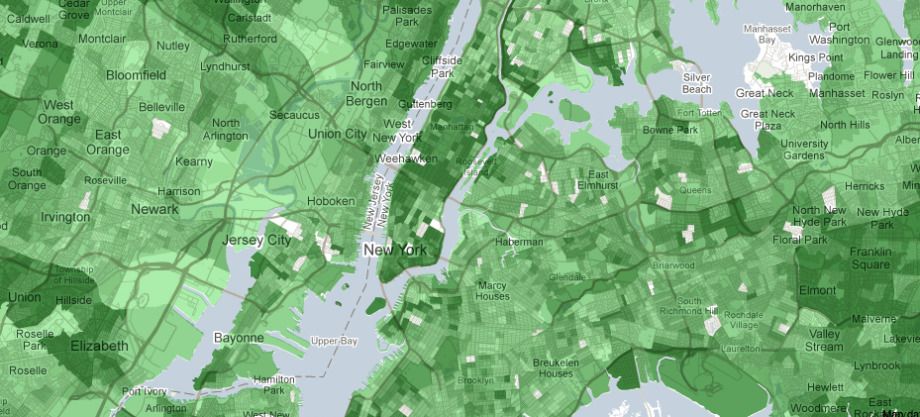After decades of decline, American center cities as a whole look better than ever. Over the last few years, the urban renaissance that had its origins in the 1990s finally began to solidify; downtowns that were devoid of life have reawakened with new retail and restaurants while inner-city neighborhoods have been renewed. It’s a nationwide trend.
The recent worldwide economic recession seems to have been relatively good to center cities as well: The Wall Street Journal reported this week that in metropolitan areas across the country, office space in downtowns is being filled even as suburban vacancies expand. And it is well known that the foreclosure crisis’ biggest victim were exurban subdivisions, not center-city lofts.
The release of the most recent dataset from the U.S. Census Bureau, covering the period between 2005 and 2009, gives another clue to the reversal of fortunes currently being experienced in the U.S.
Though the data is not final — the full results of Census 2010 will provide that next year — these American Community Survey estimates provide further evidence for the increasing wealth of many center cities. They also show, more depressingly, the increasing impoverishment of near-in suburbs.
Whereas inhabitants of Suffolk County, Massachusetts (which includes Boston) saw their median household incomes grow by 2% since 2000, people living in all three surrounding counties saw their median incomes decline. In New York, Manhattan saw local median incomes increase by 10% but suburbs counties Westchester, Bergen, Middlesex, and Union Counties all saw declines.
The City of Baltimore, Maryland kept household income relatively steady even as Baltimore County, which surrounds it, lost ground. Same story in the Washington, D.C. region, where the three center cities — Washington, Arlington, and Alexandria — each saw median incomes increase by about 10% even as near-in suburbs of Fairfax and Prince George’s Counties, once known as two of the nation’s most successful suburbs, saw a slight decrease.
Of course, these trends are not universal: In the further-out suburbs of Washington, like Charles County in Virginia and Anne Arundel County in Maryland, there were increases in household wealth. Meanwhile, some cities experienced continued decline over the past ten years — though their suburbs didn’t do much better. Median household income fell 20% since 2000 in Warren County, Michigan (which includes Detroit), 9% in Cook County, Illinois (which includes Chicago), and 14% in Cuyahoga County, Ohio (which includes Cleveland).
Overall, though, these data point to trends that have been slowly manifesting themselves in recent years, namely the spread of the poor to suburbia and the rejuvenation of the central city. These are trends that cannot be separated: Two-thirds of the growth in American poverty over the past ten years has taken place in the suburbs, largely because cities are throwing away their old identities of being warehouses for the poor.
The question is whether U.S. urban and transportation policy is addressing these facts on the ground. Over the years, cities have adopted strong policies to provide for social services in the form of local clinics, transit, affordable housing, and public community facilities. These offerings ensure adequate quality of life even for the poorest individuals — but the wealth being concentrated there may have less need for this aid. On the other hand, suburbs, used to being middle- or upper-middle-class only enclaves, often have few of these features and thus are likely to encounter increasing problems as they attempt to address the needs of their changing populations.
Is this demographic transition occurring too quickly? Will we be able to catch up?

Yonah Freemark is a senior research associate in the Metropolitan Housing and Communities Policy Center at the Urban Institute, where he is the research director of the Land Use Lab at Urban. His research focuses on the intersection of land use, affordable housing, transportation, and governance.


_600_350_80_s_c1.jpg)













